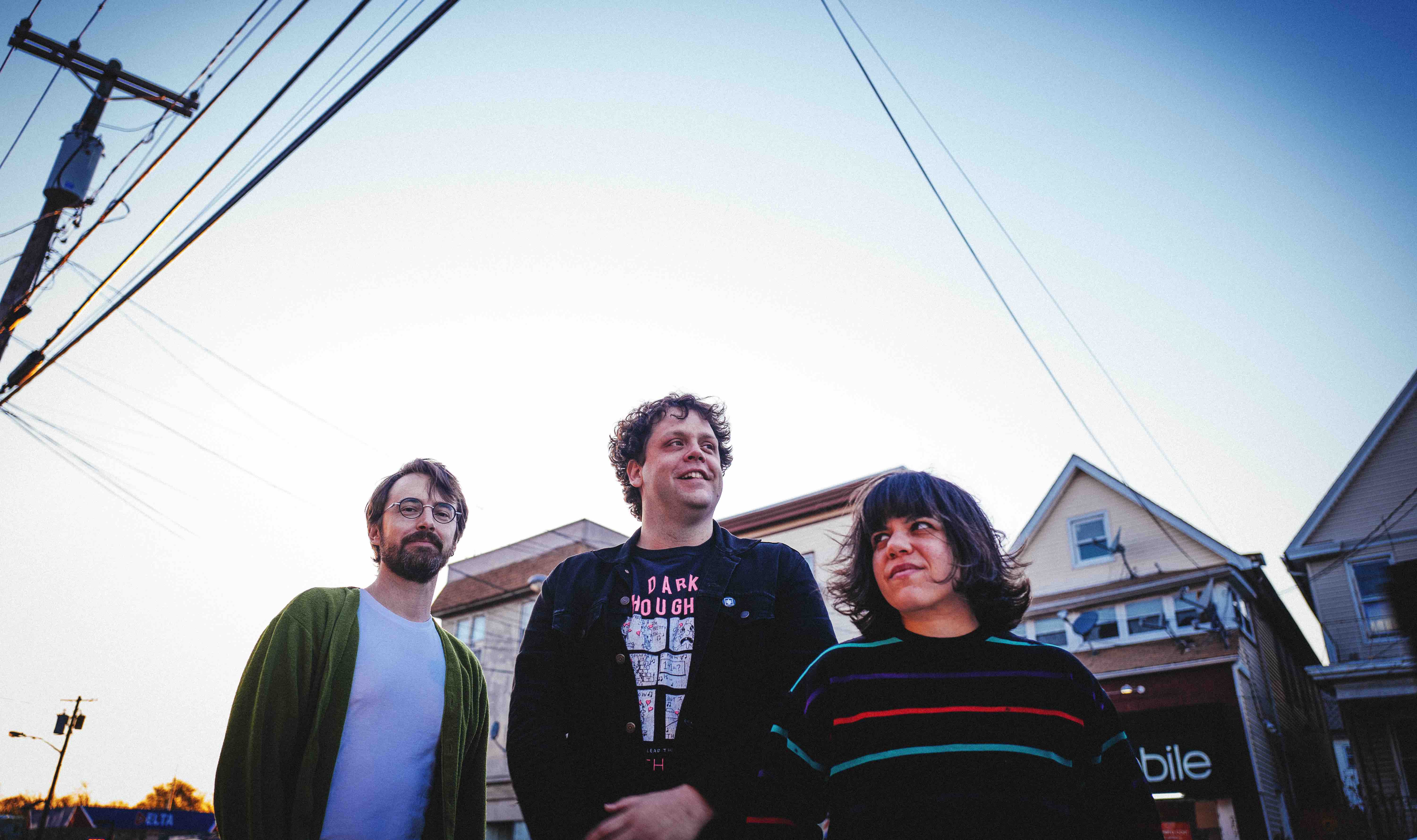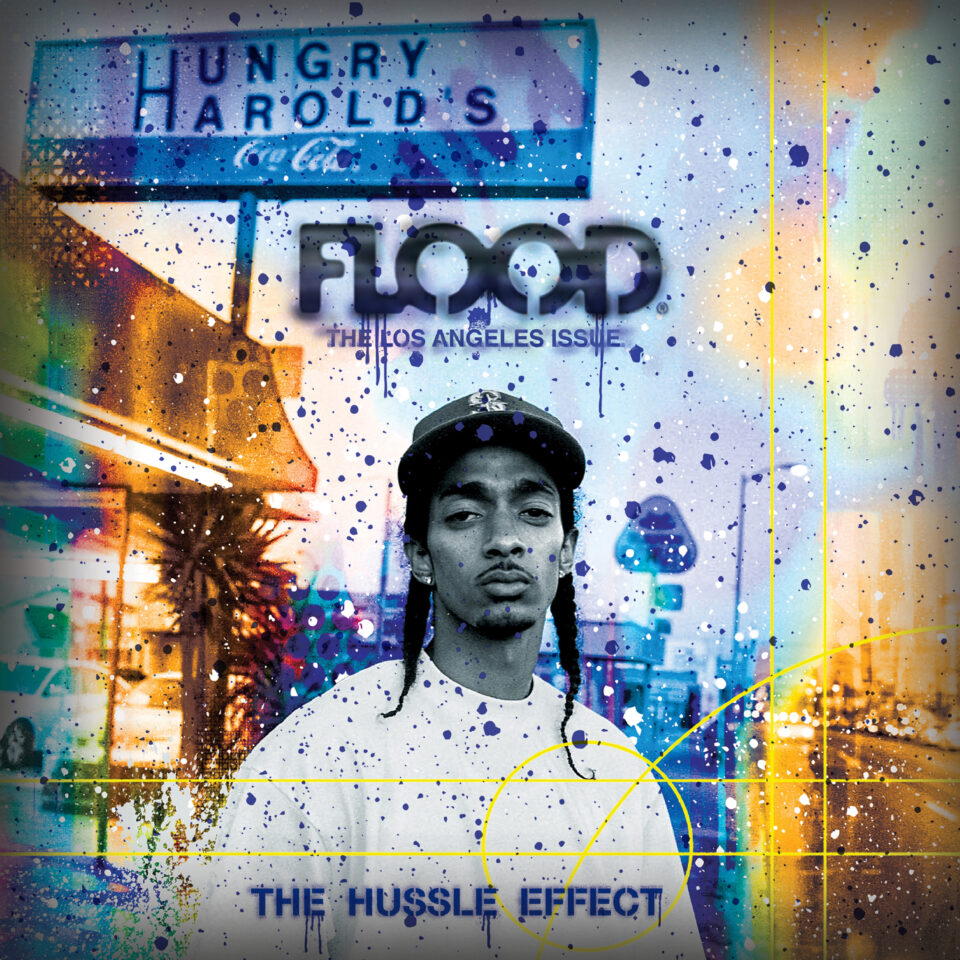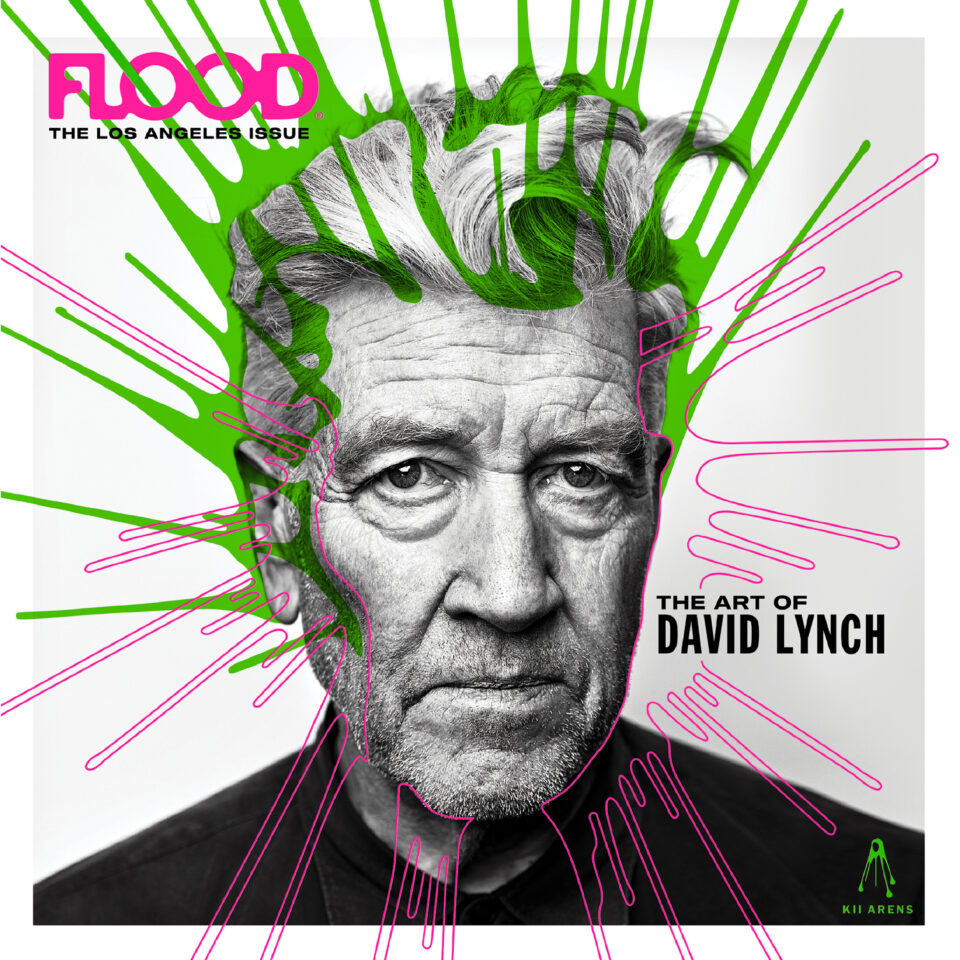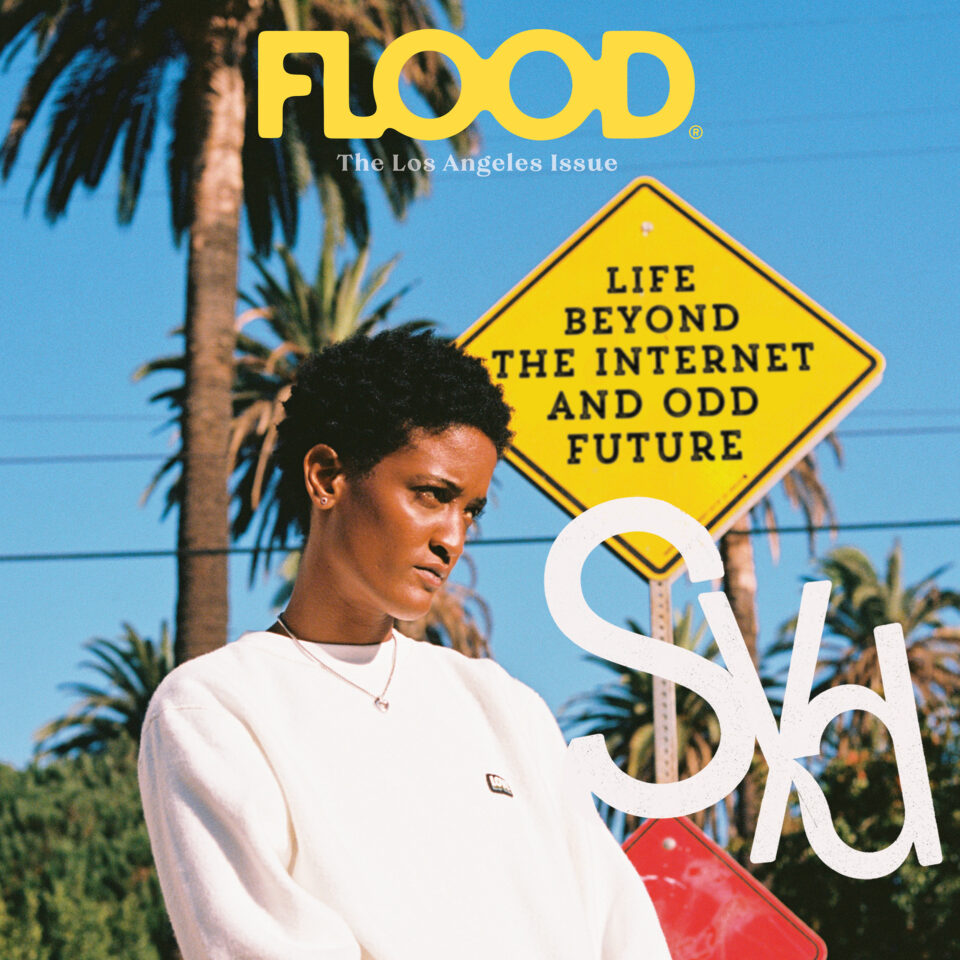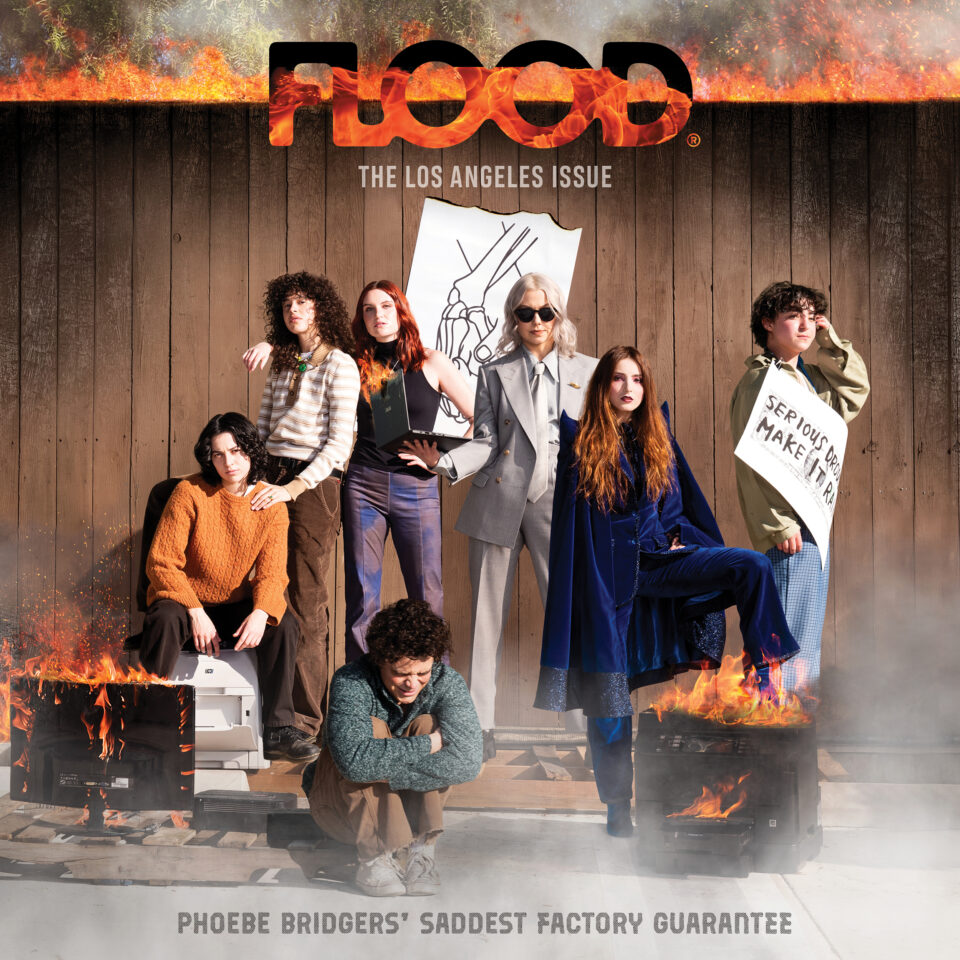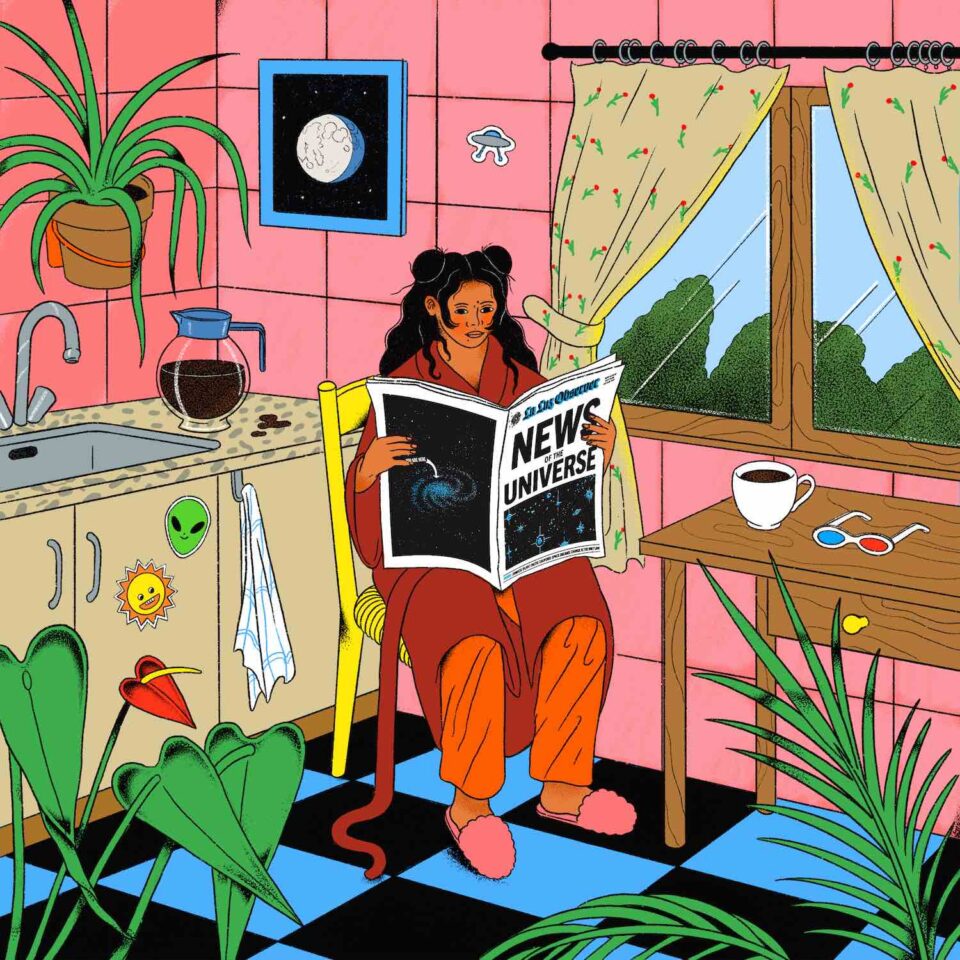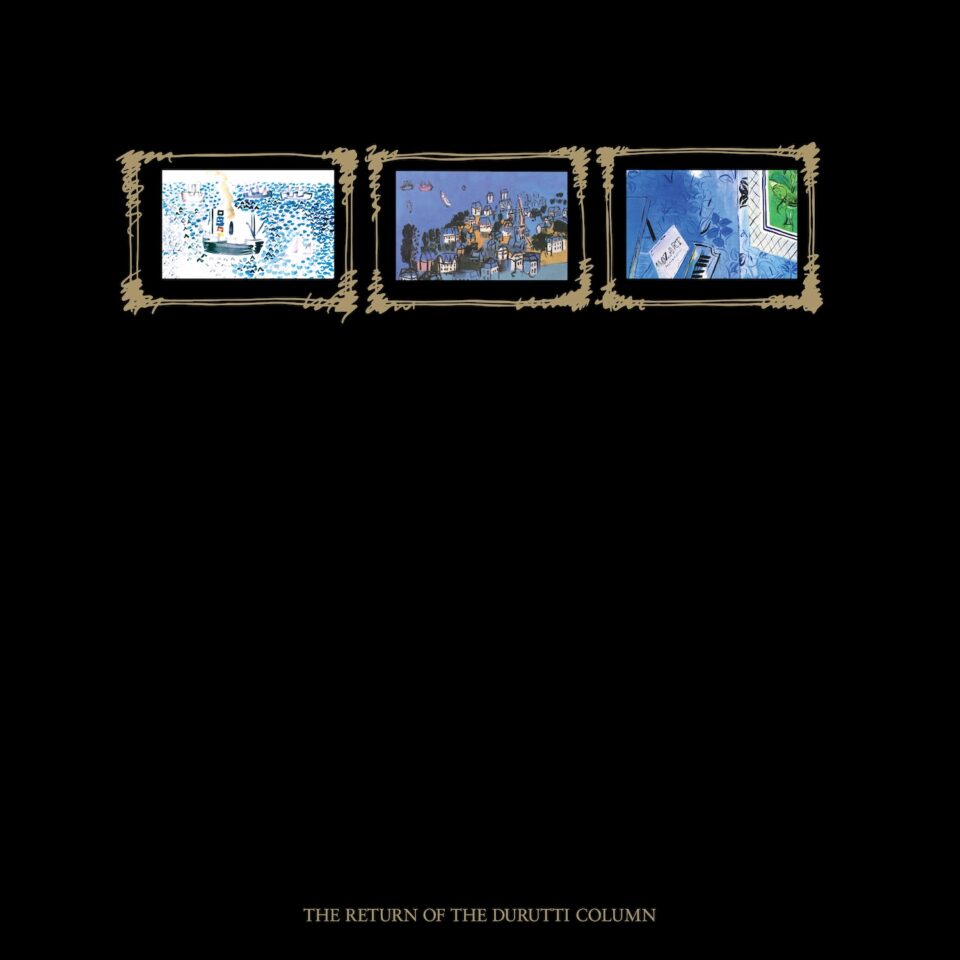Screaming Females never repeat a set. On the cusp of the New Jersey DIY shredders’ eighth LP Desire Pathway, singer/guitarist Marissa Paternoster estimates their working repertoire at 40 or 50 songs, so at any given show they could pull out a deep cut, and you could hear a face-melting solo or ad-lib you can’t find in any live video, scour the internet as you might. “I want to try and encourage people to follow us like the Grateful Dead,” says bassist “King” Mike Abbate, who catalogs every show. “There’s really no reason not to,” adds Paternoster.
It’s just one way the band—Paternoster, Abbate, and drummer Jarrett Dougherty—keeps things spontaneous 18 years in. On Desire Pathway, their third record with producer Matt Bayles, the trio also shakes things up in the studio, leaning into odd rhythms on tracks like the lighter-waving waltz “Beyond the Void” and the scorching lead single “Brass Bell,” and then stuffing them with wah-riffs and ghostly sound experiments. They took the pandemic as an opportunity to work up to their more challenging ideas, even as they stuck to their strengths as one of the hardest-rocking and most staunchly self-sufficient power trios around.
“It’s easy to think being in a three-piece rock band might be really limiting, but when you sit down and think about all the different things you can do with just drums, bass, and guitar, it’s kinda overwhelming,” says Paternoster. “There’s new things we can try all the time. It’s literally endless. I try, actually, not to think about it.”
With the album out now, the trio broke down the unlikely inspirations and technical puzzles behind each track from Desire Pathway.
1. “Brass Bell”
Jarrett Dougherty: We recorded at Pachyderm, which is a famous studio out in the woods in Minnesota, and when we got there, they had a ton of vintage, modular synthesizers just sitting in the corner of the control room, not set up. I was shocked to see they had all these original synthesizers that were produced in Milwaukee by a small, independent producer in the late ’90s, which was the time when no one cared about modular synthesizers. I was like, “Oh my god, we gotta set these things up. This is a sound that nobody has on their record.”
Marissa Paternoster: Jarrett came to band practice after seeing a singer-songwriter at a coffee shop in Philadelphia, who I guess played in—well, Jarrett has explained that the song is in 4/4, and I know that it is, logically, but it doesn’t really sound like it. I guess the singer-songwriter was playing in that kinda groove, so Jarrett brought that to band practice, and that was how it all started. It’s funny that the song is so heavy, because it was born out of Jarrett seeing a woman play guitar alone in a probably very well-lit coffee shop.
2. “Desert Train”
Paternoster: Mike came in with 95 percent of the riffs, or more. Maybe 96 percent.
Mike Abbate: There’s a band from Minneapolis called Constant Insult who I really like, and the thesis statement for their band is they wanna sound like The Rolling Stones mixed with The Marked Men. I was like, “Aw, that’s cool, I wanna try and do that.” I had this thing I was working on, but by the time I showed it to Marissa—you know, now it sounds way cooler than I ever intended. Marissa added fuckin’ sweet-ass riffs and turned it into an actual cool song. All the lyrical content comes from Marissa, and I don’t know what the hell the song’s actually about, but “a freight train in the desert dragging chain”—that sounds fuckin’ badass to me.
Paternoster: I feel like I hear quote-unquote desert rock in so many different things, even though I would be hard-pressed to describe the genre beyond, like, three bands. But that’s what it sounded like to me when Mike played a couple of the riffs. It was, like, a hard rock song, so I just extrapolated on that.
3. “Let You Go”
Abbate: That was one of the last songs we came up with, and it started very grungy. It doesn’t really sound like a grunge song anymore, but on our setlist, it says “Grunge.” That’s our nickname.
Dougherty: Originally, it sounded more like L7 or something.
Paternoster: I’m a big fan of the first Veruca Salt record, which I feel like is supremely underrated—a pretty heavy band with really cool light, airy harmonies. I was trying to emulate that a little bit, because it sounded like the melody lent itself to that. I did have trouble singing the chorus, so it’s our first song that’s tuned down a half-step, which is something you would think we would have done our entire career because we’re an alternative rock band.
4. “Beyond the Void”
Dougherty: We ended up releasing a few songs for donation that we had put together during lockdown with our social distanced project. This was one that we wrote during that same time, but we didn’t release—I think because it has such an organic feel. The rhythm is a very particular thing; it’s like a 12/8 where you’re actually swinging within the threes, if that makes sense. Every beat is divided in three, and each of those is divided into three. The easiest example to touch on would be “Manic Depression” by Jimi Hendrix, but it’s not a widely used rhythm, and I thought that was interesting.
When I tried to put it with the drum machine, Mike was like, “This feels like a song we need to play together.” Marissa was saying “Brass Bell” feels like it’s in a weird time signature—which it does, but it’s clearly 4/4. Whereas this one jumps all around, and for some reason that felt totally natural to everyone except for me when I had to figure out how to play drum fills.
5. “Mourning Dove”
Paternoster: I have zero memories of writing this song, to be honest. We probably wrote it four or five years ago. I remember Mike came up with the bridge, taking the riff and transposing it, but that’s my only memory.
Dougherty: The chorus to this song also has a weird time signature, and that’s something Mike brought in, where it switches between these 4/4 and 2/4 sections. Each of the choruses is actually a different arrangement of time signatures. Marissa was like, “Oh, I don’t know if I could sing over this,” and Mike was like, “You definitely can, let’s really give it a go, I can hear it in my head and it’s gonna work.” And Marissa was like, “Alright, it doesn’t feel particularly natural to me, but I can work something out.” I feel like other people might have abandoned that idea along the way, either because they didn’t want to spend the time or because it might be too much of a confrontation in the band, but I know that we work well enough together that we’re all willing to explore an idea to its end.
Paternoster: Now, the only thing that keeps me from messing it up is that I’m singing. That’s what guides me. We’ve come full circle.
6. “It’s All Said and Done”
Abbate: This was another lockdown song. I was really inspired by an old K Records band called Blackouts, who kinda groove a little bit. I was trying to make a bass line that sounds like them, ’cause that’s a fun thing to do, and then Marissa and Jarrett brought in a bunch more parts that made it sound like The Hives. I was fuckin’ psyched on that, ’cause usually if you try and sound like The Hives, you’re gonna fall short, ’cause they’re the greatest band in the world, but if it happens naturally, then it’s kinda cool.
Paternoster: I was thinking a lot about Gang of Four when we recorded this, at least the tonality of the guitar. Obviously, it’s not as harsh as Gang of Four, but I was leaning more toward that end of the spectrum than the more saturated Big Muff stuff that I usually do…even though I don’t think I’ve had a Big Muff since I was 16.
7. “Ornament”
Abbate: I remember being really insistent on the verse melody. Marissa was trying to come up with other stuff, and I was like, “Please just sing it this way.”
Paternoster: He didn’t want to hurt my feelings, though. He entertained all of my 500 other ideas.
Dougherty: We almost abandoned this. Usually if we get halfway into a song, we’re like, “We’re gonna finish this up,” but I feel like there was a point when Marissa sent the 498th version of the melody where we were like, “Maybe this is just done.” It sat for a long time, almost finished, maybe even through the pandemic. When we started getting together again, we finally were able to have some distance on it. I think that was the point when we were like, “What if we just do that melody that Mike had from the very beginning that worked?”
Paternoster: I think the pandemic served as a catalyst for the compulsion to work on things over and over and over again, so I was even worse than I usually am, which is pretty bad.
8. “So Low”
Paternoster: It took me a long time to feel confident enough—not embarrassed, or like I was going to get rejected—to bring a song that’s sad and quiet to Screaming Females with the thought that it wouldn’t need accompaniment. “Hopeless” on Rose Mountain was probably the first time. This song I recorded prior to the pandemic, so it’s pretty old, and then I sent it to Mike and Jarrett, and Jarrett was like, “I don’t think this needs anything else.” That was kind of it. I had drumming ideas, but they just weren’t sticking.
Dougherty: Something like The Replacements with “Answering Machine,” how that song sits so well on that record…it’s this completely different moment, and I had the idea that this song could do something like that. It wasn’t until we got to the sequencing we got to see whether that moment was going to be available, but that’s what I was hearing. How did Paul Westerberg be like, “This song is done”? It’s really hard to make that call sometimes. To me, I listened to the demo, and I was like, “If the right moment is available on this album, this song is done.”
9. “Let Me Into Your Heart”
Paternoster: I think I brought in the verse riff, ’cause I had a melody that went along with it. I was thinking about bands like Ride and maybe Galaxie 500. I don’t think the song sounds like either of those bands, but that’s what I was probably thinking about. The idea for the decaying drum sound while the guitar feeds back and the backing vocals fade in, that was an idea that I have always tucked away in the back of my mind. I think it worked out nicely!
Abbate: For fun one day, we started playing a peppy, fast version of it that sounded like Joe Jackson or something, and then we had essentially two versions of the song. The vocal melody was different, the lyrics were different, and we were like, “OK, which one’s gonna go on the album and which one’s gonna go on the EP?” Because this song’s longer, it gave us room to do more sonic exploration and flesh out the album, ’cause it’s a loud rock song, but there’s also a lot of space. An acoustic guitar comes in. That synthesizer from the first song comes in. It gave us room to create a nice headphone experience for the listener.
10. “Titan”
Paternoster: This was one of the last songs that we wrote before we went to the studio, and I honestly didn’t think it would make the album. Maybe because we spent the least time with it, I kind of assumed it would wind up on an EP or as a single. I always kinda step away from the sequencing because I’m super guilty of not listening to albums in full. I’m a serial skipper. Mike and Jarrett are way more attuned to how important sequencing is, so I defer to the masters.
Abbate: I personally love when albums close with a loud, fast, rockin’ number with a really cool guitar solo, ’cause then it makes you just wanna start the whole album over again, you know?Dougherty: When we came to sequencing, we each blindly wrote our idea of what the sequence would be, and Mike and I had the exact same A-side, I’m pretty sure. Maybe one or two songs were flipped, but the B-side was a little bit different. You want to make sure you’re not doing the same thing over and over again, but there’s something about “Titan” that is core to what Screaming Females is known for and does really well, which is a rock song with some killer guitar work in it. Mike had the idea that ending the album with something that felt so core to what we do would just be a strong moment.

